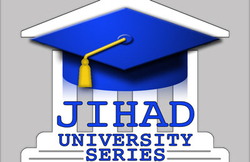 The following article is a continuation of the IPT's Jihad University Series.
The following article is a continuation of the IPT's Jihad University Series.
From their support for the Boycott Divest Sanction (BDS) movement, to hosting terrorists, to accepting terrorist tainted funding, some of the nation's top universities have become part of the Palestinian resistance.
Radical U – Part 2: How Students Turned their Professors' Words into Deeds
by A.J. Caschetta
Special to IPT News
August 15, 2025
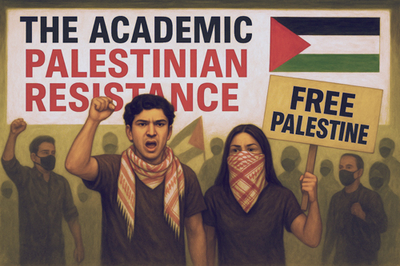 Image generated by AI |
Is it really a mystery where he was indoctrinated with hatred for Israelis, Jews, and Zionists?
Like their anti-Israel professors, the architects of the academic Palestinian resistance, anti-Israel students have grown bolder and more confident since 2021 – the result of so many efforts to "center decolonization and raise the voices of Palestinian scholars." Except their "praxis" is more overt and violent.
"Part of this Movement"
Within hours of the Hamas assault on October 7, the National Students for Justice in Palestine (NSJP) released a "Day of Resistance Toolkit" proclaiming itself not merely "in solidarity with this movement" as their professors had in 2021 but rather "PART of this movement."
The "Toolkit" also asks members to sign the "Towfan Al-Aqsa Statement" posted on a Google drive by the "Bears for Palestine," the University of California, Berkeley, chapter of SJP – "Bears" being the school's mascot.
That statement says that, "Resistance comes in all forms – armed struggle, general strikes, and popular demonstrations. All of it is legitimate, and all of it is necessary."
Transpassing Theory
Having taken the rhetorical leap from protester to armed combatant, the statement continues in academic jargon that would make the "Scholars for Palestinian Freedom" proud: "We as students possess an obligation to support the liberation movement and embody a solidarity that transpasses theory and is grounded in practice."
The curious phrase "solidarity that transpasses theory" stands out. The verb "transpass" meaning "to go beyond" has been obsolete since the 17th century, having been replaced by "transcend." But the word has reemerged with another meaning in the world of "Queer Theory," signifying a performance so successful and convincing that a person of one gender "passes" for another. If this is the authors' intention, it suggests violence disguised as, or "passing for," theory.
Whatever their etymological intentions, using the phrase "a solidarity that transpasses theory" was clearly meant to be an erudite way to indicate action and imply violence.
Taking cues from their professors' call to action, the students would opt for an even more active "praxis."
The anti-Zionist Jewish Voice for Peace (JVP) claims that its "commitment to racial justice is a core praxis in our work, by which we mean an ongoing cycle of action and reflection within which we are striving to dismantle racism–both outside and within the organization–while also working to grow a liberatory culture for our organizing."
Elias Rodriguez
The impact of the "Palestine & Praxis" professors on college students is apparent in the life of Elias Rodriguez, a 2018 graduate of the University of Illinois at Chicago who protested with various groups throughout his college years. Though the facts of his life are not yet fully known, the path to his May 21, 2025, murder of two people because they were Jewish, seems to have begun in 2014 – presumably when the 2018 graduate would have started college. Thus far, no evidence that he was a member of SJP has emerged, but Chicago media identified Rodriguez as a member of ANSWER, and we know he was a member of the Party for Socialism and Liberation, which often protests in conjunction with the Students for Justice in Palestine (as it did in the November 13, 2023, protest at the university where I teach).
Rodriguez left behind a note (widely referred to as his "manifesto") that shows a trail back to the "praxis" ideals. The English major identifies the statement he wrote prior to his murder spree as a "text to fix its meaning." In it, he alludes to his "non-violent protest" history and acknowledges that "the rhetoric has not amounted to much." He identifies the missing element of his attempt at "bringing the war home" both as "armed demonstration" and "armed action," using the terms as euphemisms for the murders he set out to commit.
Rodriguez wrote that even though "such an action would have been morally justified taken 11 years ago during Protective Edge ... to most Americans such an action would have been illegible, would seem insane."
But times have changed since 2014, and he knew it. He writes with confidence that "today at least there are many Americans for which the action will be highly legible and, in some funny way, the only sane thing to do." His defense attorneys will likely use these words in an insanity defense. The prosecutors might want to look into his "praxis professors."
Historical Context
The academic Palestinian protest rhetoric, from praxis to armed struggle, is nothing new but rather a replication of the birth of modern terrorism when self-defined terrorists, first in Russia, then throughout the West, decided that the old rhetorical propaganda of previous radical movements was obsolete.
Today's radical students may flatter themselves as the first thinkers to decide that the importance of their cause justifies "transpassing theory" and taking up "armed combat," but the Berkeley Bears and their followers are merely following a pattern established by their ideological forebears who were also frustrated by their inability to persuade through well-crafted arguments. Beginning in the second half of the nineteenth century, anarchists, anti-Capitalists, and other radical revolutionaries abandoned rhetoric and embraced violence.
Bruce Hoffman attributes the idea of "propaganda by deed" to Carlo Pisacane, Duke of San Giovanni (1818-1857), who wrote that "ideas result from deeds, not the latter from the former" and argued that violence was far more effective than traditional forms of persuasion, such as "pamphlets, wall posters, or assemblies."
Walter Laqueur attributes the idea to Pyotr Kropotkin (1842-1921), another aristocrat who gave up his position to fight against the system he was born into. Kropotkin wrote that "One such act [of violence] may, in a few days, make more propaganda than thousands of pamphlets."
In the 20th century, the new preferred euphemism for violence was "direct action." It became so popular that a French terror group took the term as its name: "Action Directe." The American terrorist group the Weather Underground Organization preached "direct action" throughout its propaganda. In Communiqué #1, dated May 21, 1970, co-founder Bernadine Dohrn wrote that, "our job is to lead white kids into armed revolution ... Tens of thousands have learned that protest and marches don't do it. Revolutionary violence is the only way." Its Prairie Fire (1974) manifesto insisted that "Action teaches the lessons of fighting and demonstrates that armed struggle is possible." The group's actions consisted of a series of "Days of Rage" violence and many high-profile bombings.
From Theory to Violence
In advancing their praxis movement, the "Scholars for Palestinian Freedom" resemble many of the Russian Anarchists who turned from theory to deed. Serge Stepniak-Kravchinski (1851-95) welcomed the advent of the terrorist who "no longer strives after that abstract moral beauty which made the propagandist resemble a being of another world," and Mikhail Bakunin (1814-76) wrote that the "bandit is the only true revolutionary – a revolutionary without fine phrases or book-learned rhetoric." Sergey Nechaev (1847-82) denounced the "idle word spillers" of an earlier era. Kropotkin called them "cautious theoreticians," and John Most (1846-1906) called them "'enlightened' pussy-footers."
As Andrew Fox recently put it, "the spiral from slur to slogan to stone is always shorter than we think." This is an apt description of academia's pushing the envelope from words to chants to violence. The "praxis" call to action in 2021 led inexorably to the "transpassers" of theory in 2023. They took over campus buildings and set up encampments on school property. At Columbia University, they held hostages inside Hamilton Hall when they "occupied" the building. One went looking for Jews to murder and succeeded. He did it for Gaza.
 Chief IPT Political Correspondent A.J. Caschetta is a principal lecturer at the Rochester Institute of Technology and a fellow at Campus Watch, a project of the Middle East Forum where he is also a Milstein fellow.
Chief IPT Political Correspondent A.J. Caschetta is a principal lecturer at the Rochester Institute of Technology and a fellow at Campus Watch, a project of the Middle East Forum where he is also a Milstein fellow.
Copyright © 2025. Investigative Project on Terrorism. All rights reserved.
Articles by the IPT may be re-published as long as full attribution and a link back to the original article is provided. |



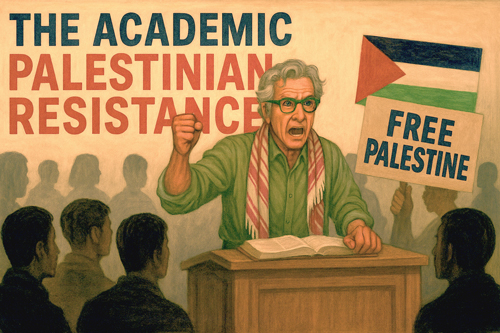 Radical U – Part 1: How Professors Became Architects of the Academic Palestinian Resistance
Radical U – Part 1: How Professors Became Architects of the Academic Palestinian Resistance
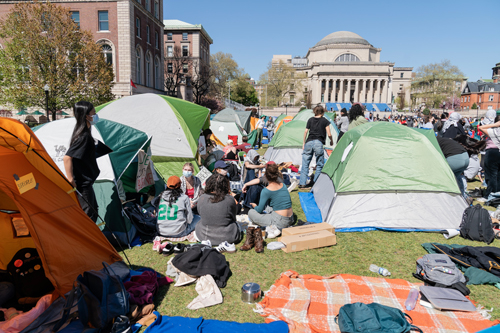 Whitewashing Anti-Israel Campus Protests
Whitewashing Anti-Israel Campus Protests
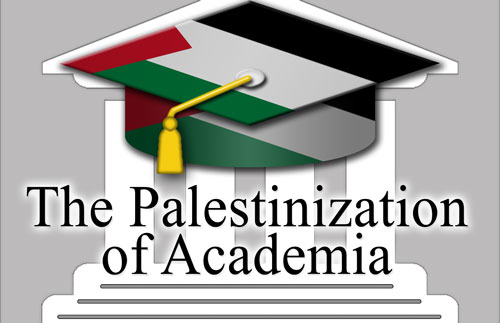 Breaking the Brand: the Palestinization of Academia
Breaking the Brand: the Palestinization of Academia